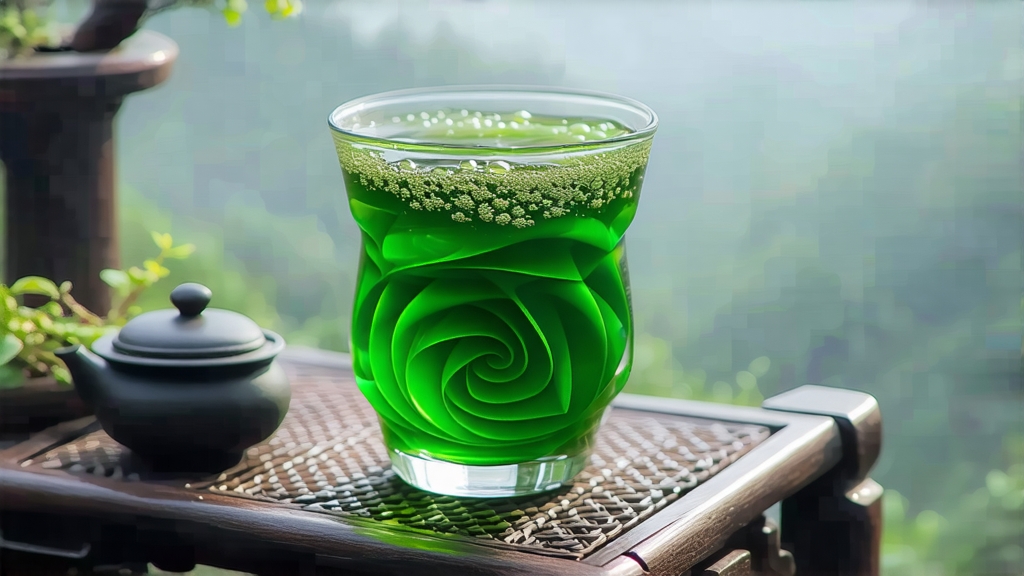
Tucked between the mist-laden cliffs of Dongting Mountain and the shimmering waters of Taihu Lake, Biluochun—literally “Green Snail Spring”—has captivated Chinese tea lovers since the late Ming dynasty. Legend claims a tea picker ran out of basket space and tucked fresh buds inside her bosom; the warmth released an intoxicating perfume that startled passing monks, who asked to taste the mysterious leaves. Whether myth or marketing, the story captures the sensual immediacy that still defines this celebrated green tea.
Biluochun is not a generic brand but a protected-origin product. Only leaf plucked within the Xishan and Dongshan peninsulas of Suzhou’s Wuzhong district may legally bear the name. Even inside this micro-zone, three grades exist. “Queshe” (Sparrow Tongue) is the rarest, consisting solely of single buds picked before the Qingming festival; downy silver tips curl into tiny hooks that resemble bird beaks. “Yipian” (One Leaf and a Bud) follows a week later, when the first true leaf has unfolded but remains smaller than the bud itself. “Te Gong” (Special Tribute) allows two delicate leaves, yet still demands 60,000 of these trios for every 500 g of finished tea. Such selectivity explains why authentic Biluochun can command over a thousand U.S. dollars per kilogram at pre-Qingming auction.
The craft begins at dawn when mountain air hovers around 12 °C and surface moisture keeps the buds pliable. Pickers wear bamboo hats rather than gloves to avoid crushing the trichomes that store the tea’s signature aroma compounds. Within two hours, the harvest is carried to low-roofed cottages where three simultaneous transformations—wilting, enzyme inhibition, and scent absorption—must be choreographed by a single master. A wok heated to 180 °C is rubbed with a slab of fresh pomelo peel; the burst of citrus oils perfumes the metal and, according to local lore, “teaches” the tea its fruity note. The picker-turned-fryer tosses 250 g of buds for precisely 4.5 minutes, using only wrist flicks that imitate the Chinese character for “tea” (茶). Temperature is then dropped to 70 °C and the leaf is rolled into tight spirals against the wok wall; the motion must be clockwise so the down points inward, locking fragrance. Finally, a charcoal brazade of young Qinglong apricot wood finishes the tea at 40 °C for twenty minutes, lowering moisture to 5 % while imparting a faint almond sweetness.
Western drinkers often brew green tea like black, scalding the leaf and blaming bitterness on the tea itself. Biluochun demands cooler reverence. Use 3 g for every 150 ml of water, but first “awaken” the spiral: pour 50 ml of 75 °C water into a tall glass, swirl for five seconds, and discard. This rinse relaxes the curl so the bud will stand upright during infusion—a visual hallmark that Suzhou poets liken to “spring bamboo shooting through thawing soil.” Refill to the same ratio and steep 90 seconds. The liquor should be the color of liquid jade caught at sunrise; any deeper and you have scorched the leaf. Subsequent infusions lengthen by 30 seconds; a quality batch yields five before aroma fades.
Because the tea is so delicate, professional cuppers evaluate it upside-down. They first smell the underside of the lid or gaiwan: top notes should recall fresh lychee, white peach, and a whisper of seawater carried from Taihu’s breezes. Next they sip while aerating the tea across the tongue; amino acids concentrated in the bud create a brothy sweetness umami scientists call “the green kiss.” Finally, they inspect spent leaves under a 5,000-lux daylight lamp. Uniform chestnut color, intact trichomes, and a single central vein that snaps rather than bends indicate correct withering. If the vein remains green inside, the kill-green phase was rushed; if reddish oxidation appears at the edge, the wok was too hot.
Beyond sensory pleasure, Biluochun functions as a cultural timepiece. Pre-Qingming lots are gifted to fiancées as “first spring promise”; mid-season grades accompany moon-cake exchanges during Mid-Autumn; autumn re-roasted leftovers stewed with river shrimp create a hometown dish that Suzhou emigrants crave in New York or Vancouver. Even the teaware evolves with the calendar: thin Dehua porcelain in March to